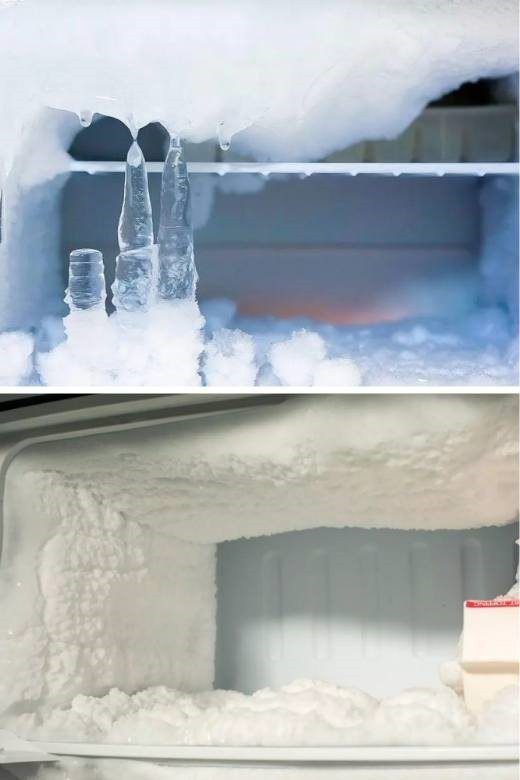ADVERTISEMENT
**The Ingenious Trick to Defrost a Freezer: The Ice Disappears Without Having to Unplug It**
A freezer is one of the most important appliances in any kitchen. It helps preserve food, maintain freshness, and allows us to store leftovers for later use. However, as we all know, freezers tend to accumulate ice over time, and when that ice buildup becomes excessive, it can affect the efficiency of the appliance, leading to higher energy consumption and even potential damage. While many people resort to unplugging their freezer and waiting for the ice to thaw, there is a far more ingenious way to defrost your freezer—without ever having to unplug it. In this article, we’ll explore a step-by-step method that can make defrosting your freezer quick, easy, and hassle-free.
By using simple, everyday household items, you can melt the ice inside your freezer without the long wait, mess, or inconvenience of unplugging it. This method involves using hot water, a towel, and a little bit of patience to get the job done. Let’s dive into this foolproof trick and explain how you can quickly and safely defrost your freezer without a hassle.
—
### Why Does Ice Build Up in a Freezer?
Before we delve into the trick to defrost your freezer, it’s important to understand why ice buildup occurs in the first place. Ice forms inside your freezer as a result of moisture from the air entering the appliance. Here’s a breakdown of the process:
1. **Air Circulation**: Every time you open the freezer door, warm air enters, carrying moisture with it. When this warm air cools down inside the freezer, the moisture condenses and freezes onto the walls, shelves, and other surfaces.
2. **Temperature Fluctuations**: If the freezer door is not sealed properly, it can cause fluctuations in temperature. This results in more condensation and ice formation. Additionally, the more frequently the door is opened, the more moisture and ice buildup you’ll experience.
3. **Humidity**: If the freezer is located in a humid area, the moisture in the air will contribute to faster ice accumulation. In areas with high humidity, ice can form more quickly because the air is constantly saturated with moisture.
4. **Defrosting Cycles**: Many modern freezers have an automatic defrosting cycle, but these cycles may not always work effectively, especially if the appliance is packed too full or the door isn’t sealed correctly. In such cases, ice will continue to build up over time, leading to an inefficient freezer.
Ice buildup can decrease your freezer’s capacity and reduce its efficiency. When too much ice accumulates, it obstructs airflow and causes the appliance to work harder to maintain the right temperature, ultimately leading to increased energy costs.
—
### The Conventional Way to Defrost a Freezer
The traditional method of defrosting a freezer is simple, yet time-consuming. This method involves unplugging the freezer and waiting for the ice to melt naturally. While this may seem like the easiest solution, it can take hours—or even a full day—before the ice is fully melted, leaving you with a mess of water on the floor and a long wait.
Additionally, if you’re trying to remove the ice quickly, you may be tempted to use a knife or sharp object to scrape it off, but this can damage the freezer’s interior and pose safety risks. Plus, there’s always the hassle of unplugging the appliance, which means you have to remove all of the food from the freezer and find a way to keep it cold until the defrosting process is complete.
While the conventional method is effective, it is far from convenient. It’s messy, time-consuming, and requires the freezer to be completely powered off for an extended period.
—
### The Ingenious Trick: Defrosting a Freezer Without Unplugging It
Now that we understand why ice builds up in freezers and the challenges of conventional defrosting, let’s explore the ingenious trick that can help you defrost your freezer in no time without the need to unplug it. This method uses simple tools that you likely already have at home: hot water, towels, and a bit of patience.
The trick involves creating a controlled environment where the ice melts quickly, without causing damage to the freezer, and without the need to shut it off. Let’s take a closer look at how to do this.
For Complete Cooking STEPS Please Head On Over To Next Page Or Open button (>) and don’t forget to SHARE with your Facebook friends
